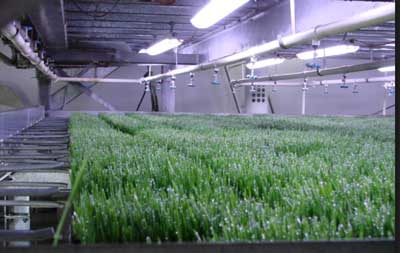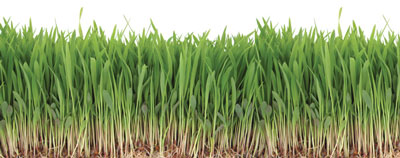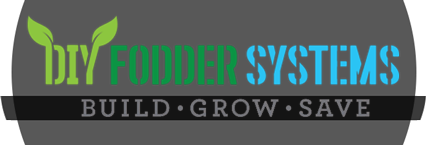Regardless of the type of livestock you have or what their purpose is in life, every animal should have access to the best possible feed.
By producing your own hydroponically grown fodder with a DIY Fodder System, you will have control over the quality of feed provided to your animals.
There are many types of seeds that can be sprouted for fodder.
We have provided an overview on the most common seeds that are grown for hydroponic fodder.
For more information on how these sprouts will benefit your livestock, visit the individual page for each type of feed.

Alfalfa Lucerne

lucerne is a highly palatable legume that has been grown as livestock feed since the fourth century.
It is valued for its high nutritional quality and is an excellent source of essential vitamins, minerals and amino acids.
Hydroponically grown alfalfa fodder is more digestible than its field-grown, dried hay counterpart, increasing feed efficiency and reducing the need for concentrates.
Benefits of feeding Hydroponic Lucerne fodder:
- High in energy, calcium and other minerals
- Excellent source of amino acids
- As much as 18% protein
- Contains important vitamins B,C, D, E and K
- Highly digestible and palatable
- Improved conception rates and fertility
- Increased livestock longevity
Barley
Barley is a cereal grain that is commonly used in the finishing rations of cattle in the United States and Canada.
These sprouts are high in protein and fiber, and are naturally balanced in protein, fat and energy.
Compared to corn, barley fodder has 95% of the energy and higher digestibility.
Barley fodder is one of the most nutritious sprouts and is full of essential nutrients, vitamins and minerals.
Feeding barley fodder will improve the overall health and wellbeing of your animals.
Feeding barley fodder offers these benefits to livestock:
- Reduced occurrence of digestive diseases, such as colic and bloat
- Stimulated immune system
- Naturally balanced with essential nutrients
- High in fiber, energy and protein
- Rich in enzymes
- Low acid content
- Highly digestible

Millet

Millet is a grass that is rich in B vitamins and high in fiber.
It has been grown as a staple feed for thousands of years and is one of the world’s most important cereal crops.
Millet fodder sprouts are highly digestible and nutritious.
They are high in minerals and essential amino acids.
Millet is similar to corn and is low in protein compared to other feedstuffs.
Millet is also fairly starchy.
It is commonly mixed with other seeds, such as oat or barley, to provide a more complete ration.
Feeding millet fodder offers these advantages to livestock:
- Contains beneficial minerals, such as iron, magnesium, phosphorous, potassium and calcium
- Rich in amino acids
- Full of B-complex vitamins
- High in fiber
Oats
Oat is a cereal grain that is one of the most important sources of livestock and animal feed in the world.
It is commonly fed to horses and ruminants due to its excellent nutritional qualities that aid with maintaining optimal rumen and hindgut function.
Hydroponically grown oat fodder is high in fiber and low in starch, making it an easily digestible feed.
Oat is also rich in nutrients and essential minerals and is one of the richest sources of protein compared to other feedstuffs.
Feeding sprouted oat fodder is good for digestion and has many other benefits, including:
- Low in starch
- Good for rumen fermentation
- Rich source of protein
- High in fiber and essential minerals

Wheat

This cereal grain has garnered attention over the last couple of years as an alternative to feedstuffs with fluctuating prices that are used in livestock rations, such as corn.
When grown hydroponically, red wheat fodder has many nutritional advantages.
Of all the classes of wheat available in the United States, red wheat has the highest protein composition.
It is also high in energy and the starches in wheat ferment quickly in ruminant digestion.
Sprouted red wheat fodder has many benefits for livestock, including:
- High in protein
- Naturally present enzymes
- Lowered pH in rumen
- Good source of energy
Sorghum
Sorghum is a grass that is rich in antioxidants and high in fat.
There are numerous varieties of sorghum and it is grown all over the world as a staple for humans and livestock.
In the United States, sorghum is grown primarily for its grains that are used in livestock rations.
Hydroponically grown sorghum fodder has many nutritional advantages and, in fodder production, it is commonly used as a supplement to provide more fat.
Sorghum fodder is highly palatable to livestock and including it in their feeding programs will provide these benefits:
- High in fat
- Nutritional value comparable to corn
- Rich in antioxidants

